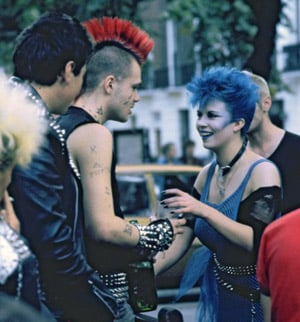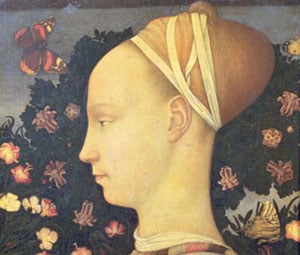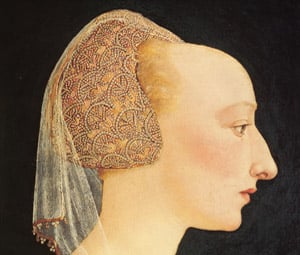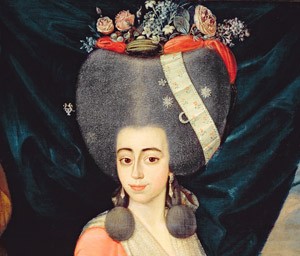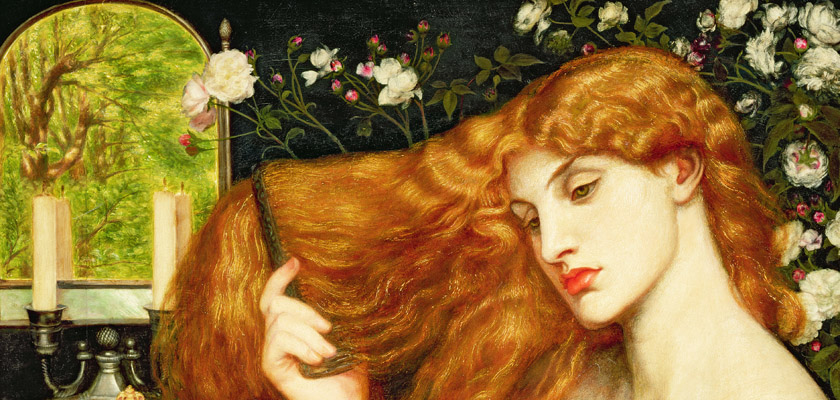
Hair, Beautiful Hair
From elaborate powdered wigs to carefully sculpted handlebar moustaches, hair is the ultimate fashion statement. Throughout history, people have worn their hair in a wide variety of styles, largely determined by culture, social status and racial identification. Here are a few examples.
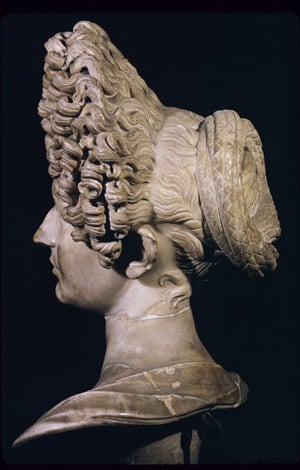
Head of a Roman Lady (back), Flavian Period, Late 1st century AD (marble), Roman, (1st century AD); Musei Capitolini, Rome, Italy
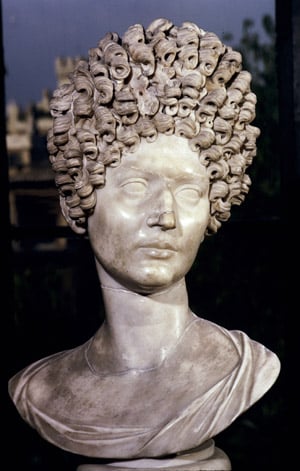
Head of a Roman Lady (front), Flavian Period, Late 1st century AD (marble), Roman, (1st century AD); Musei Capitolini, Rome, Italy
Curls
In ancient Rome the tendency was to follow Greek styles. Wealthy women wore ornate piles of curls on the tops of their heads, shaped around wire frames. These elaborate updos were created by slaves and servants often with the aid of crude curling irons.
Having gold dust sprinkled among the strands was a definite status symbol. Equally popular were blonde hairpieces which were made from the hair of captive slaves. In contrast men’s hair was kept short and even shaved on occasion. See more Roman hairstyles.
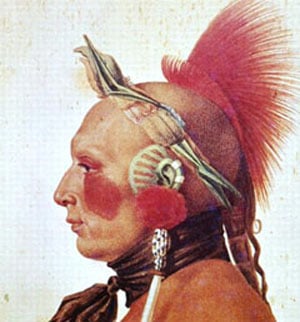
An Osage Warrior, c.1804 (colour litho) by Charles Balthazar Julien Fevret de Saint-Memin (1770-1852)
Private Collection/ Peter Newark American Pictures
The Mohawk
Today the Mohawk is largely associated with Punk, yet it originates from the Mohawk nation, an indigenous people from North America, specifically the Mohawk Valley in upstate New York. Typically, the Mohawks grew their hair long, as they say their hair is a connection to the Creator, but when the men went off to war they cut all but a narrow strip down the middle.
In the most common variety, both sides of the head are shaved leaving a strip of noticeably longer hair in the centre. It tends to be a high-maintenance hairstyle requiring holding agents and dye. Today, there are upwards of 20 different varieties of mohawk inspired hairstyles, notably the ‘faux hawk.’ There are many different hair styles amongst the Native American Indians that vary depending on the tribe and their geographic region. See more Native American hairstyles.
Plucking
In the 15th century, women of the upper class really took ‘plucking’ to its limit!
They began plucking their eyebrows and then the entire front hairline to give the appearance of a higher forehead. They would pull the rest of their hair back into elaborate styles, braided, tied up with ribbons and knotted in various shapes or covered with expensive fabric.
Bathing in these times was irregular and the styles were meant to last for days or weeks at a time.
Women often wore their heads covered during this period so many Renaissance hair styles were worn with a veil, hat or netted cover known as a caul.
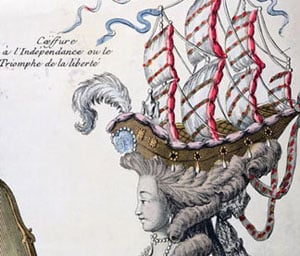
Credit: Woman in a Day Dress with a hairstyle ‘a la Belle Poule’, period of American Independence, 1779-80 (coloured engraving), French School, (18th century)
Private Collection/ Archives Charmet
Big Hair
The 18th century was without doubt the most extravagant era for hair styling.
Women would spend hours creating outrageous hair dos. Aiming to go as high as possible, hair would often be modelled around cage frames, using starch, powder, horse hair pads, utilizing anything to hold it upright, an unfortunate side effect that these creations became ideal hiding places for vermin.
The most imaginative of these women would go as far as creating miniature scenes above their heads complete with wild accessories such as model boats and live birds.
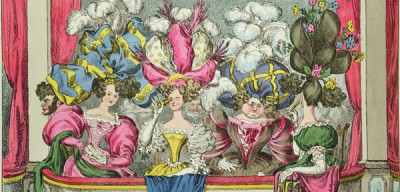
The Dress Circle, published by Thomas McLean, London (coloured etching), by William Heath (1795-1840)
Read More
View more historic female hairstyles in the Bridgeman archive not identified in this feature.
View more historic male hairstyles in the Bridgeman archvie not identified in this feature
Contact our sales team on uksales@bridgemanimages.com for more information regarding licensing, reproduction and copyright.

